Colour Memory, 2016, single-channel video projection, HD, 13:30 Min., 16:9, (loop), color, sound, dimensions variable.
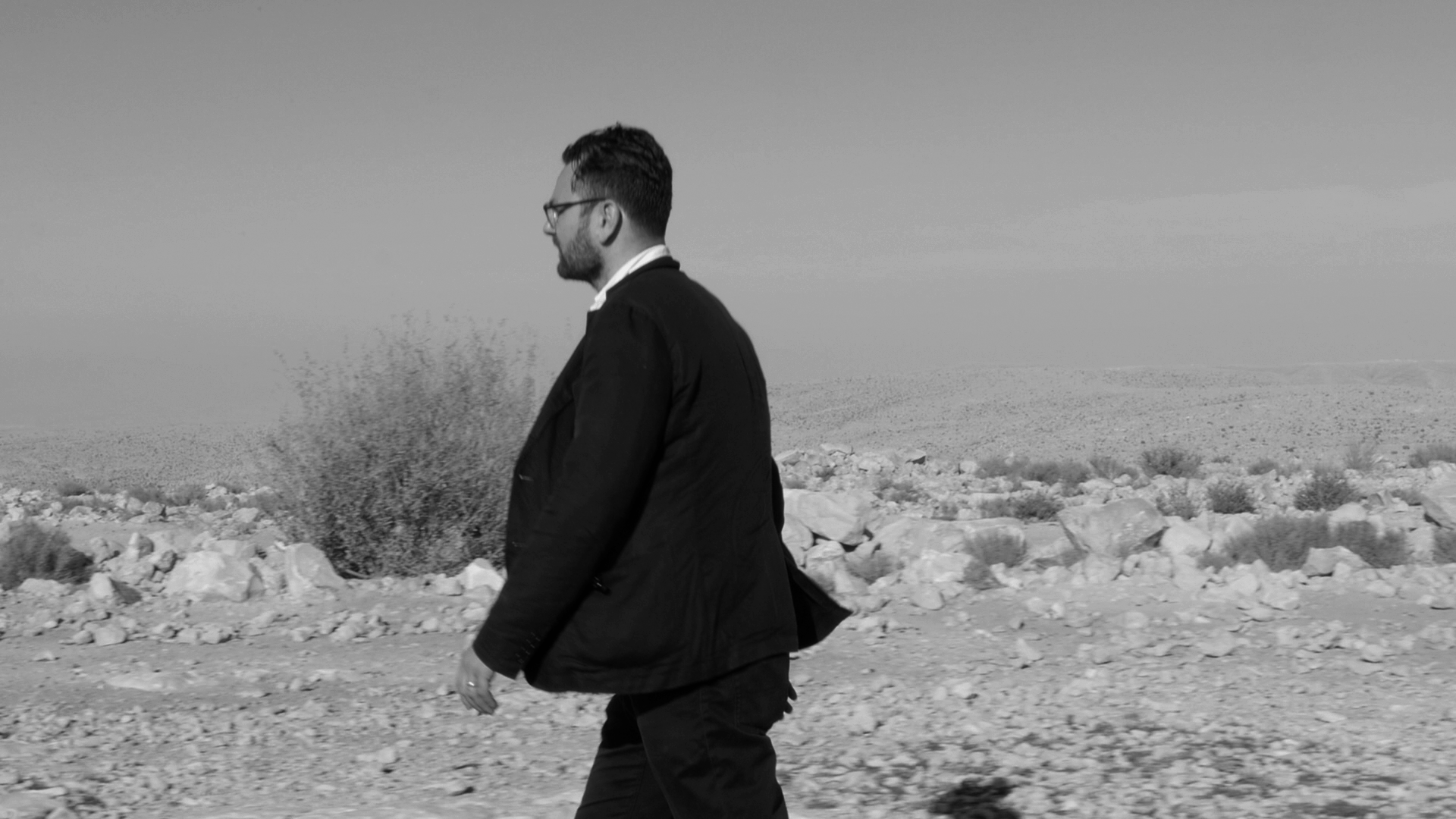


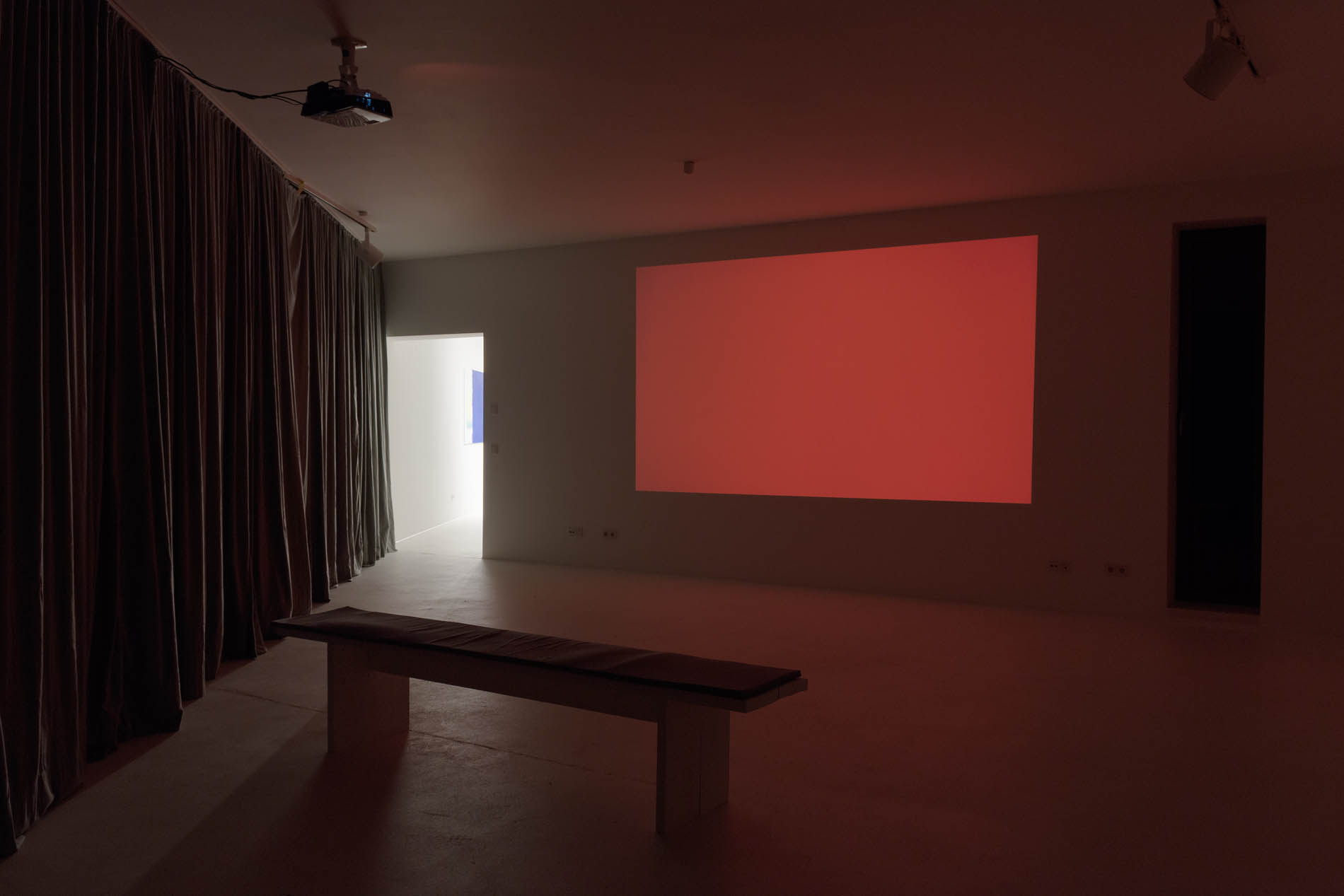

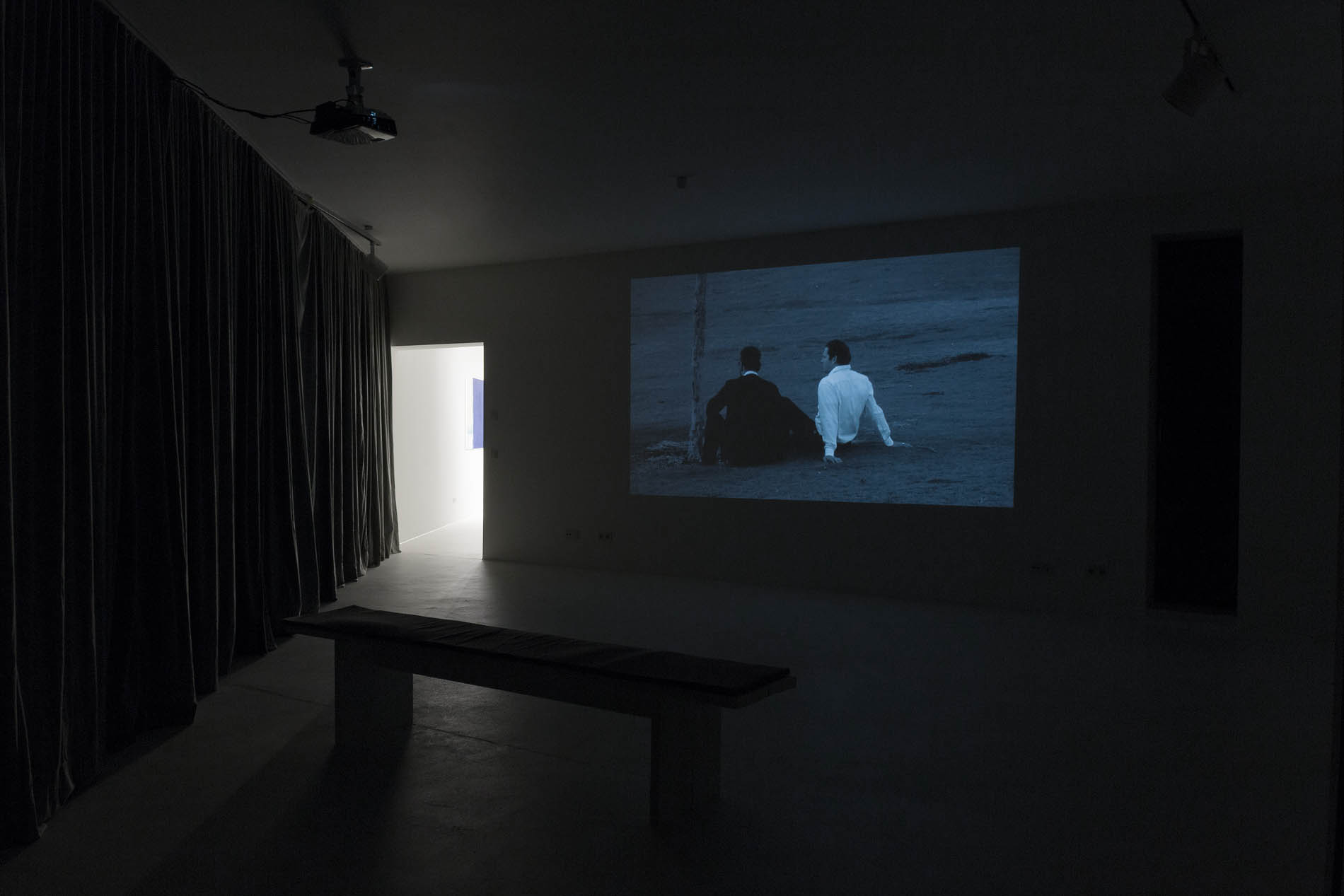
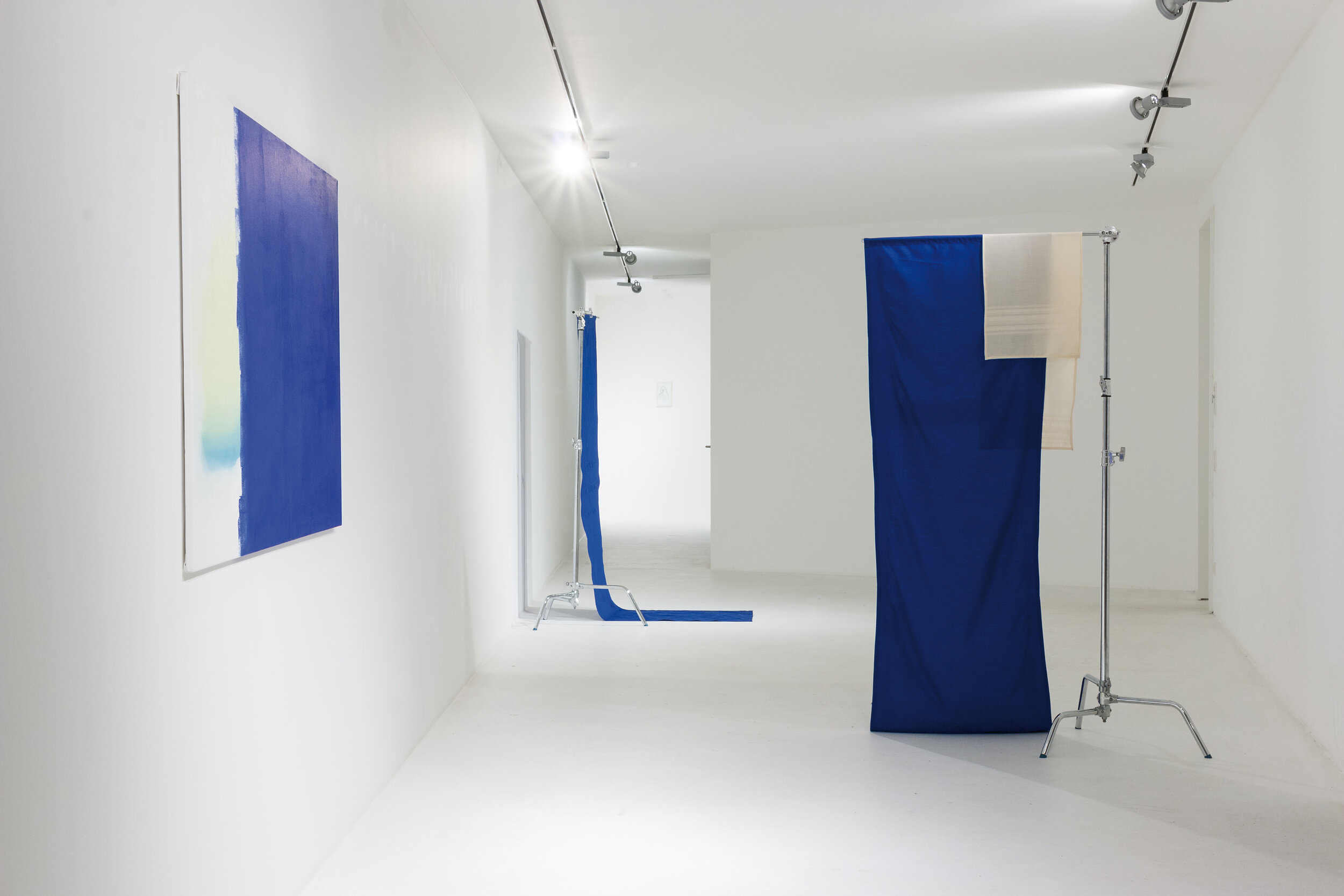
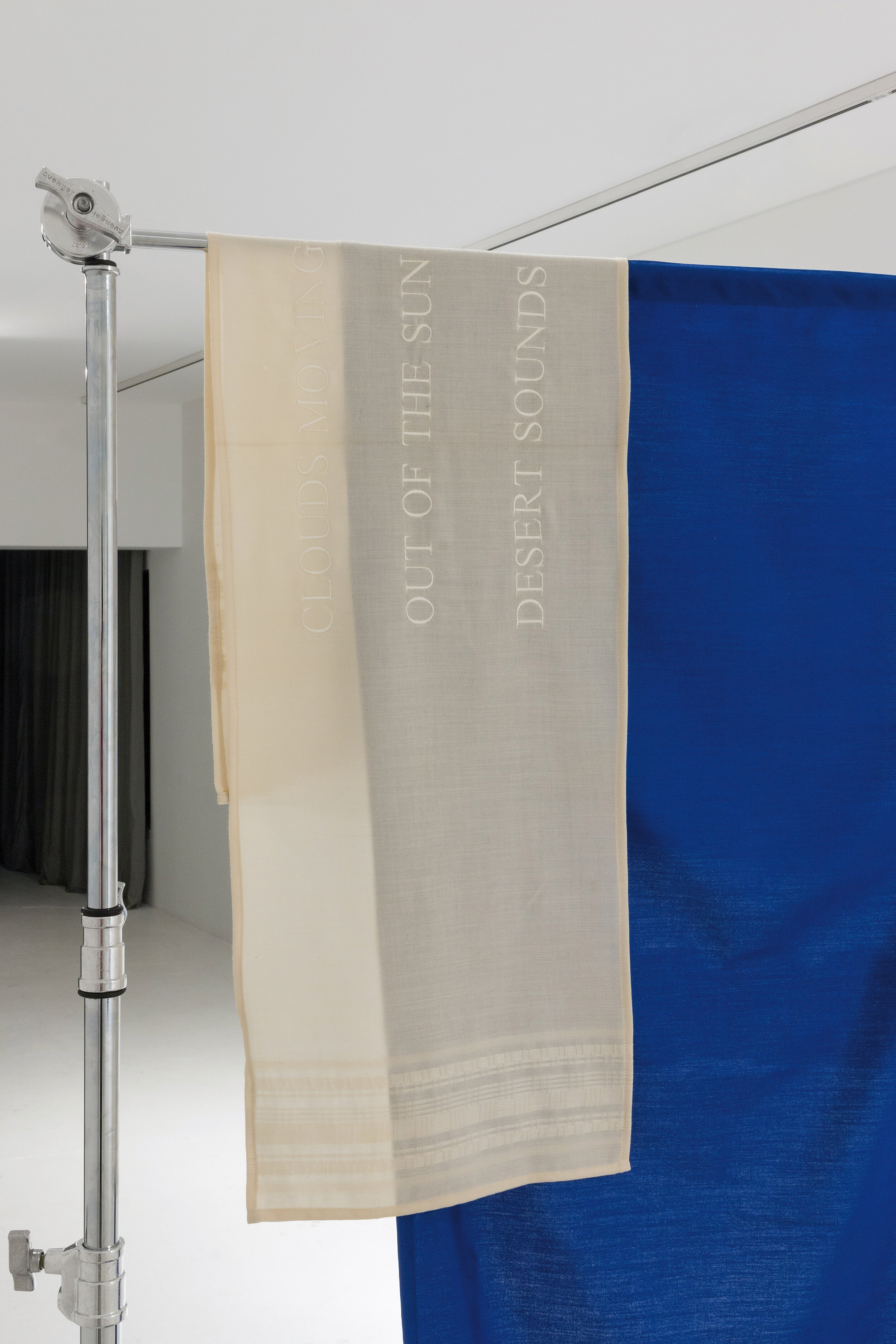
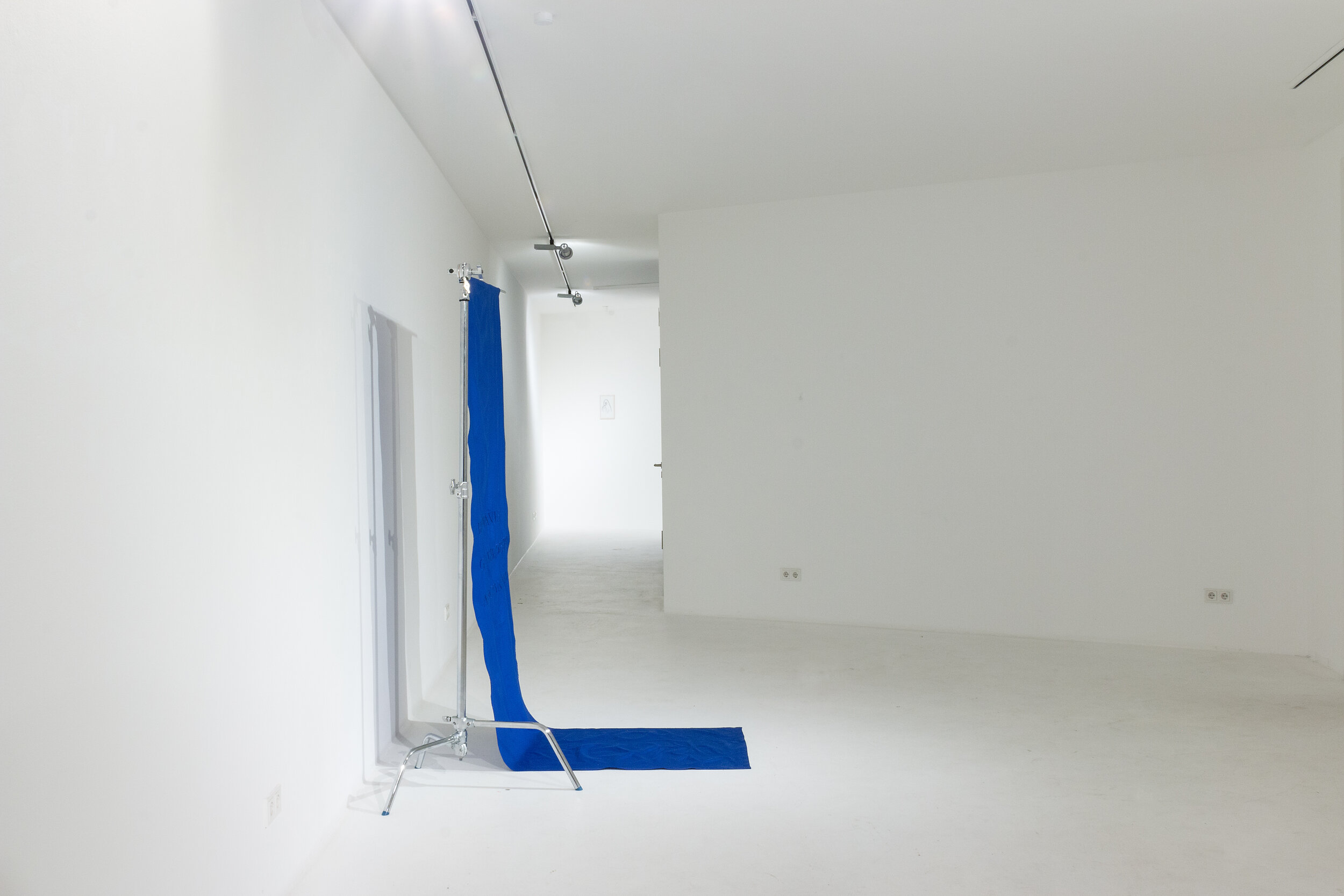
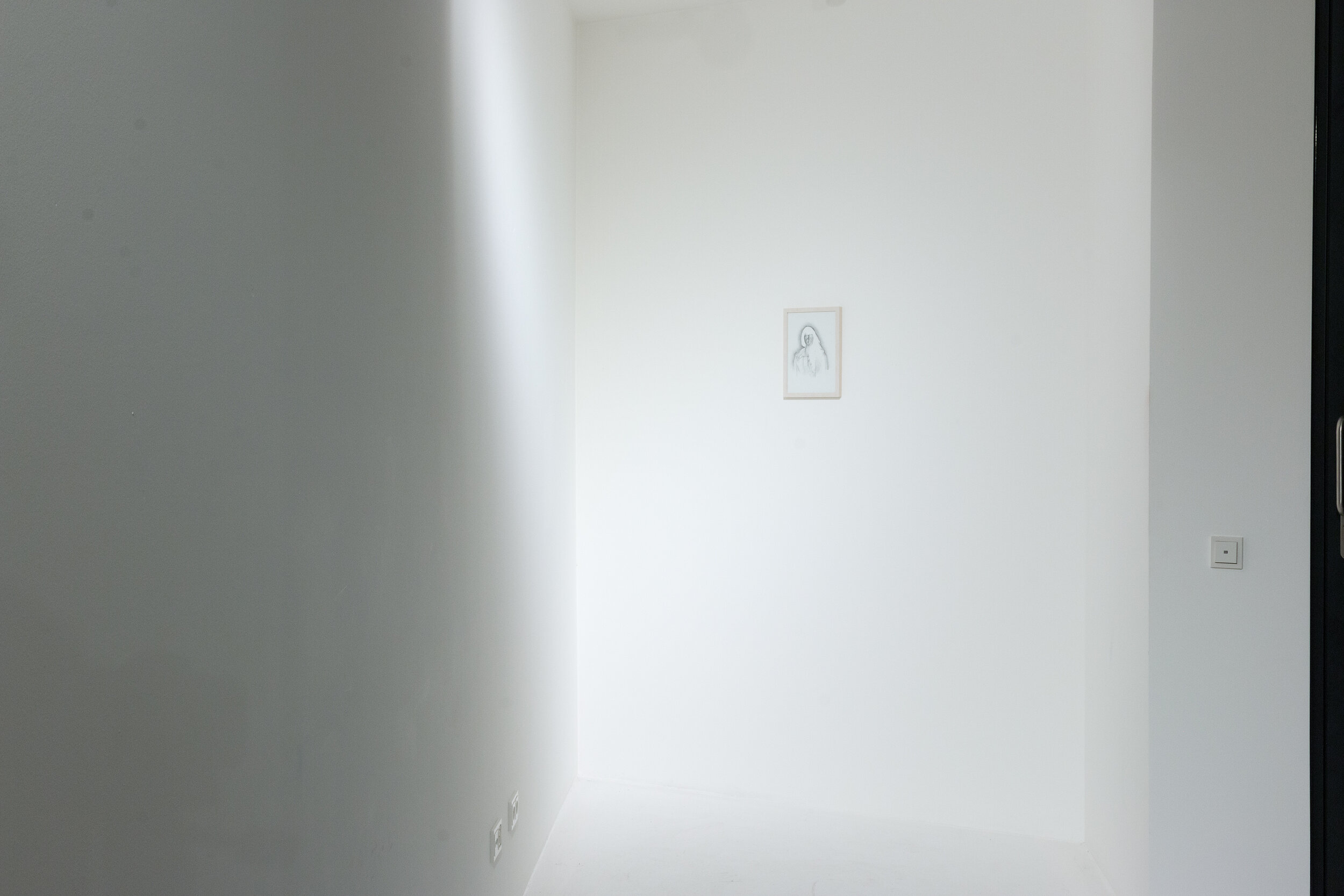
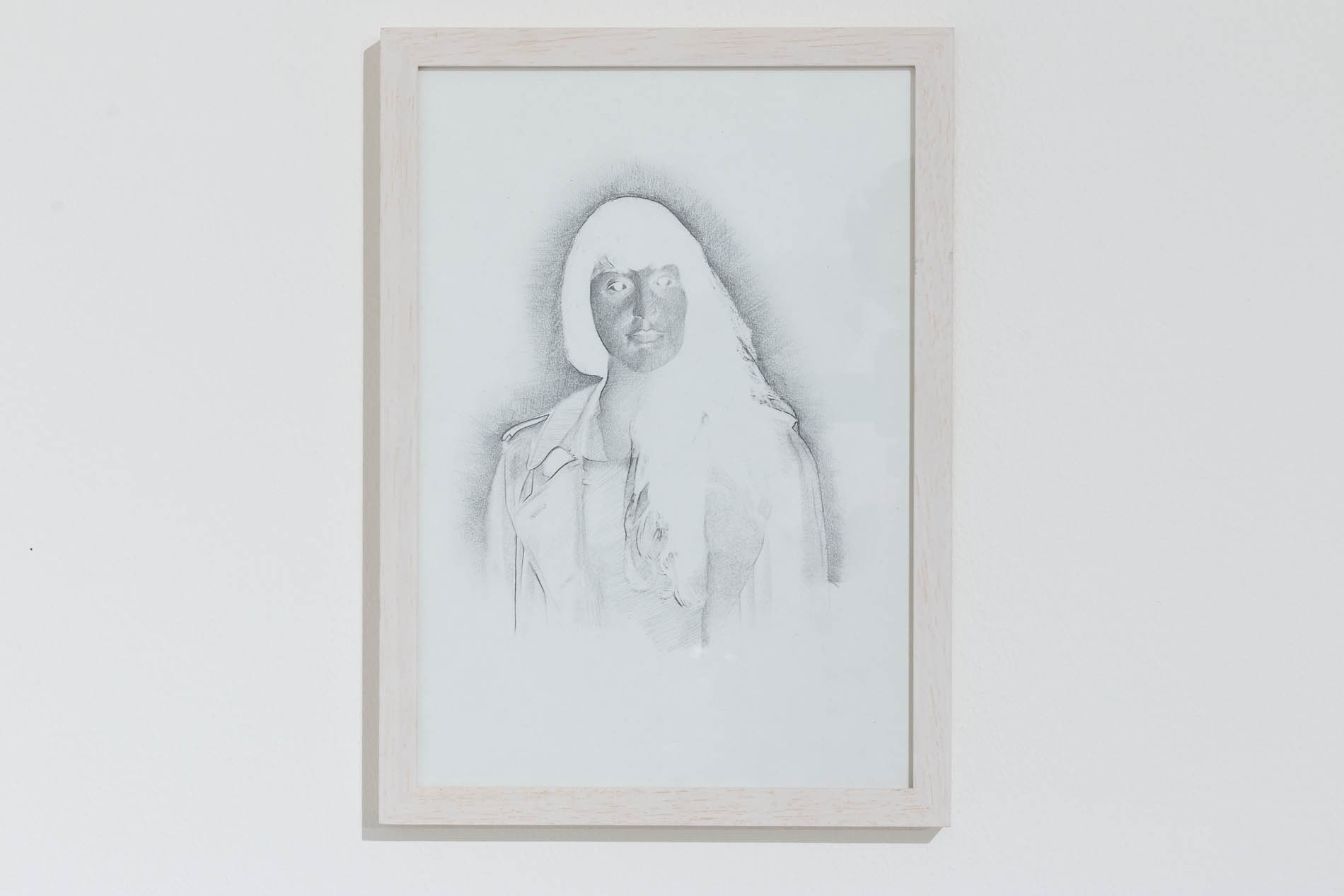
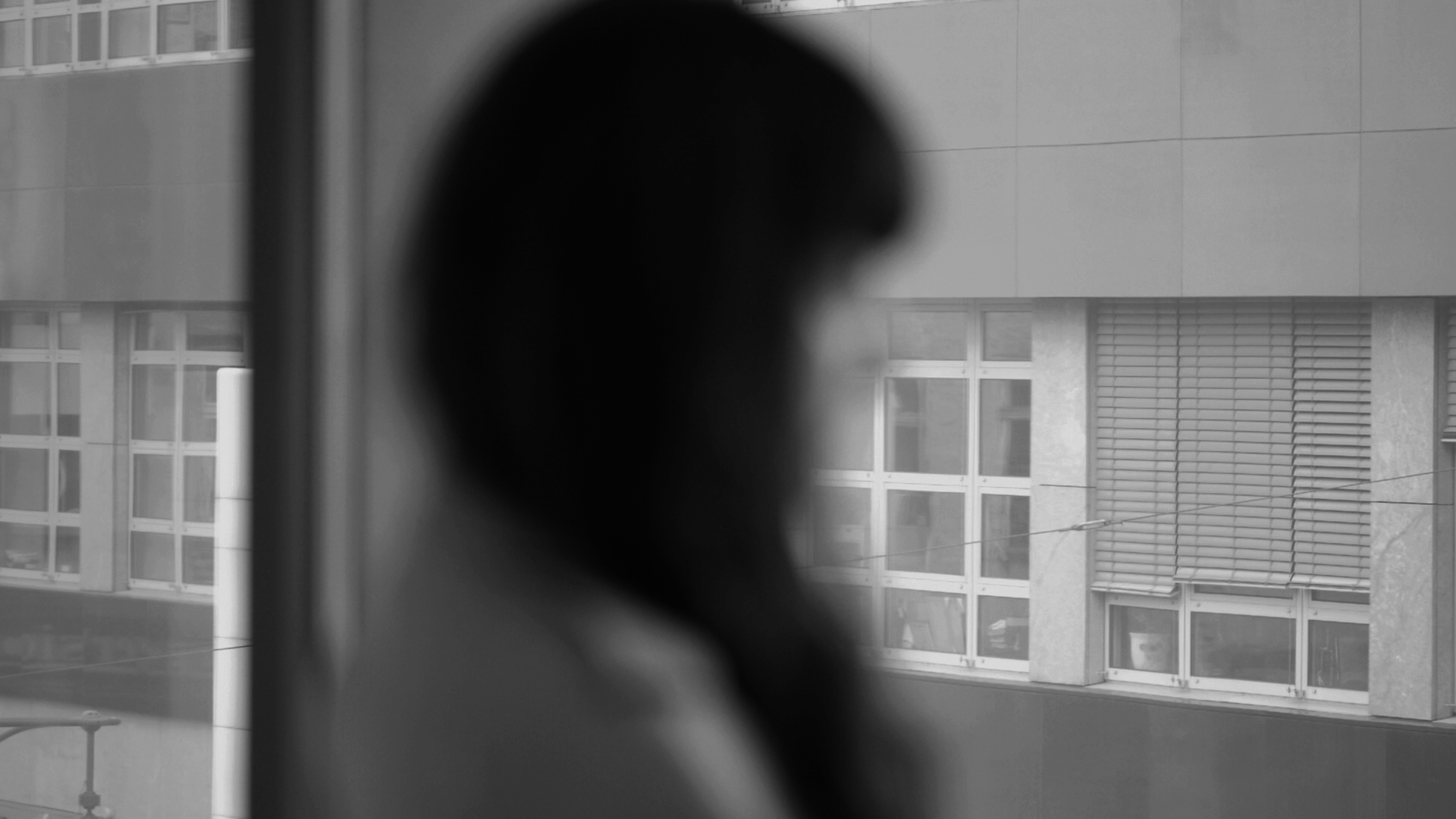
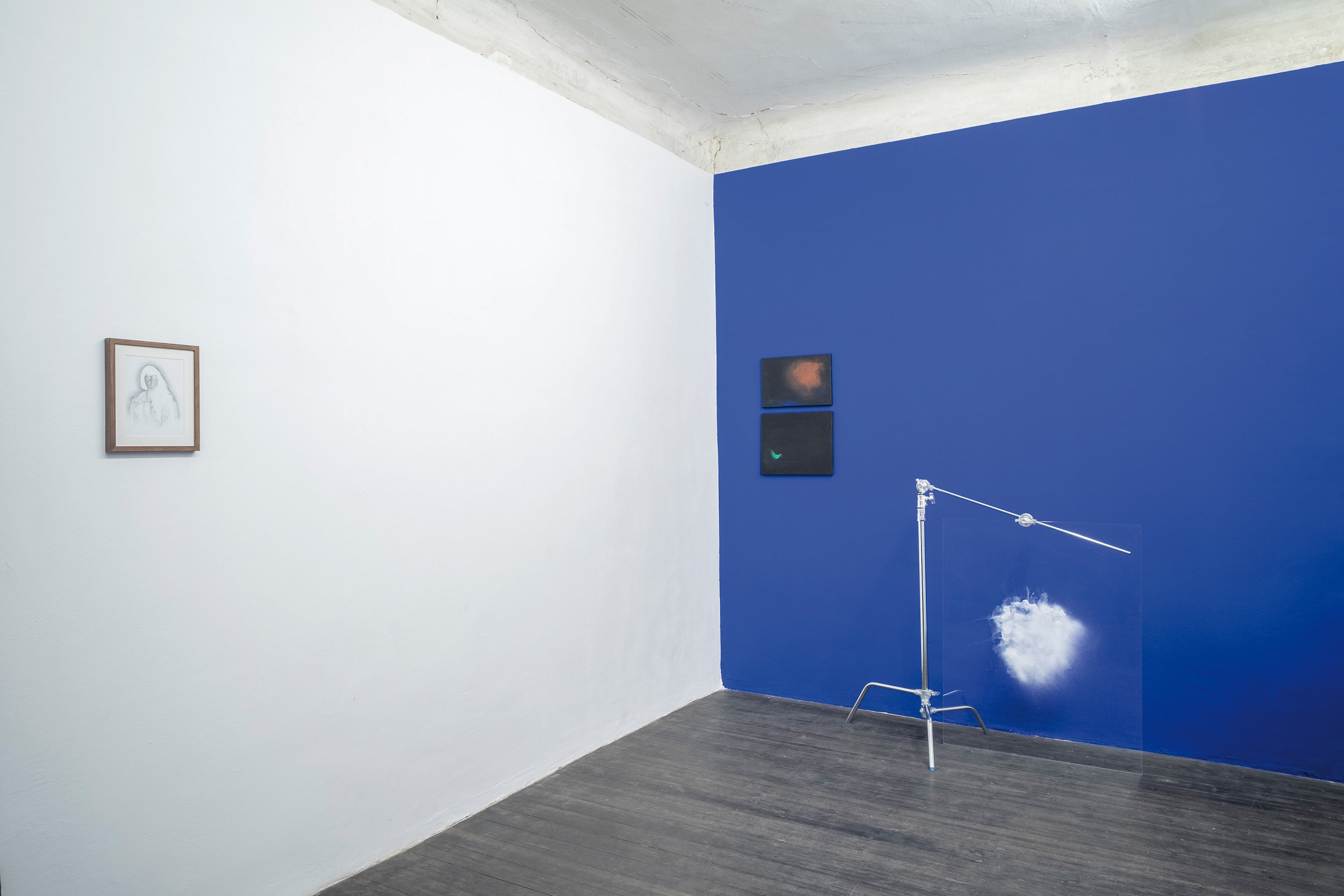

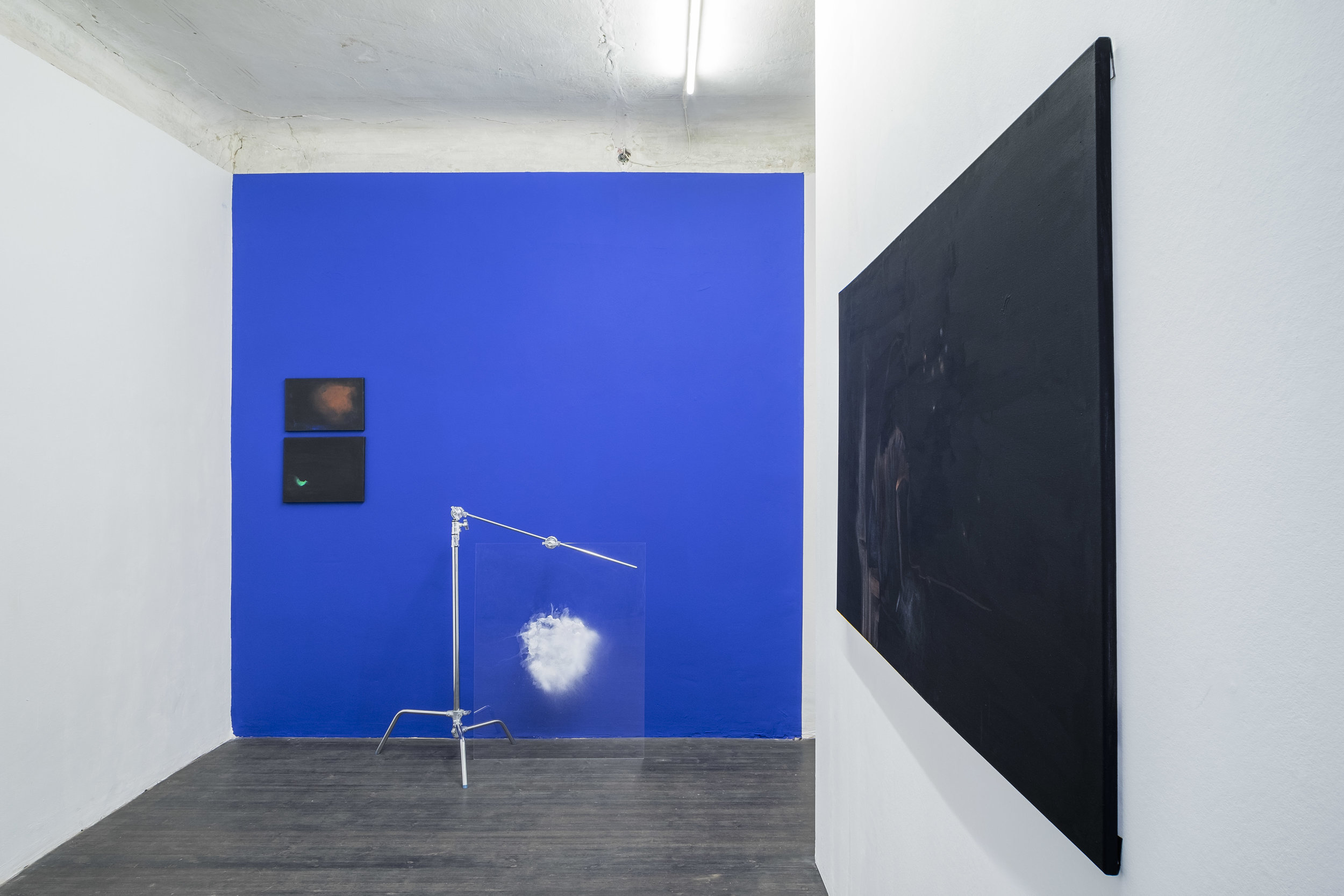
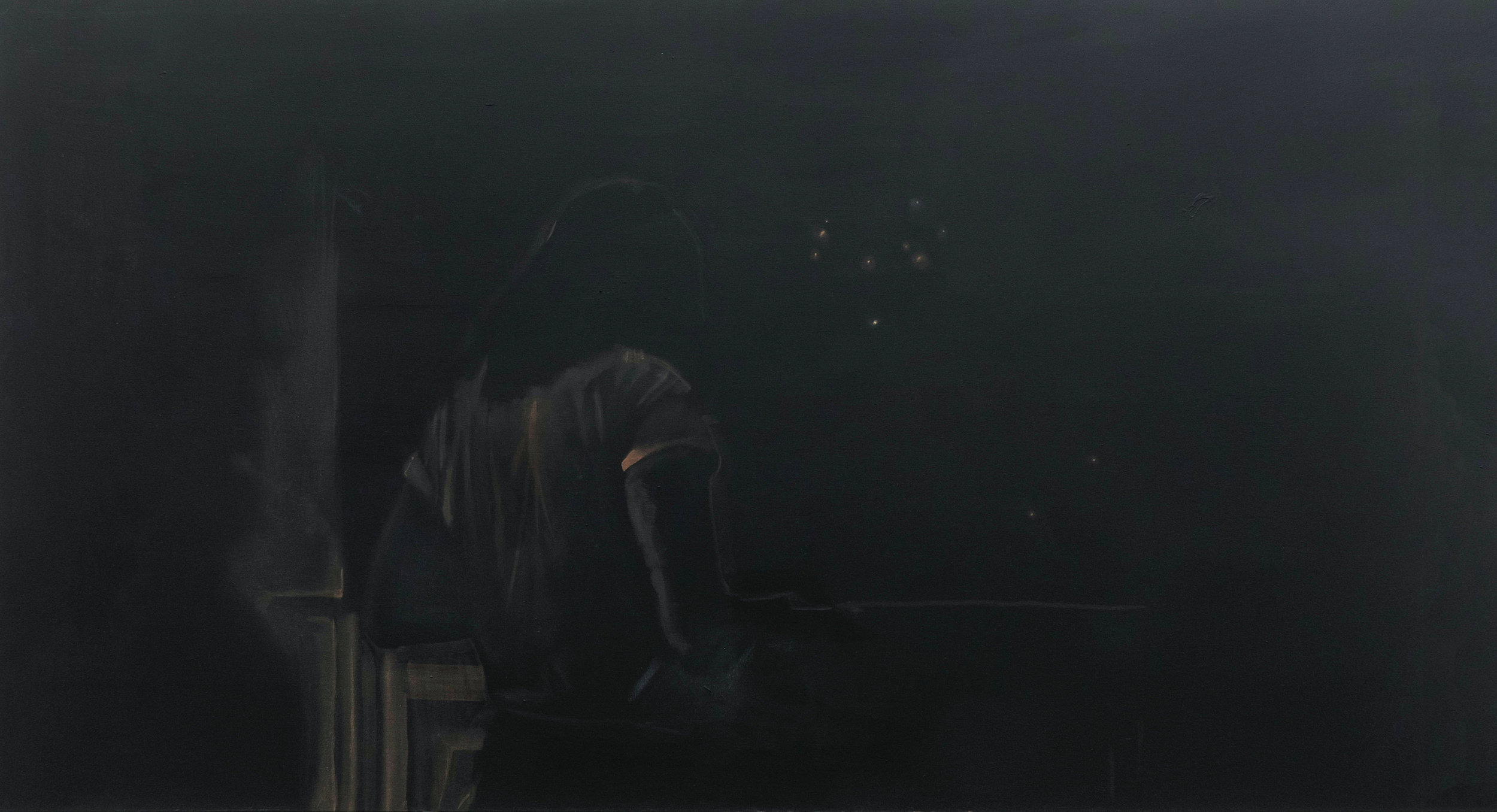

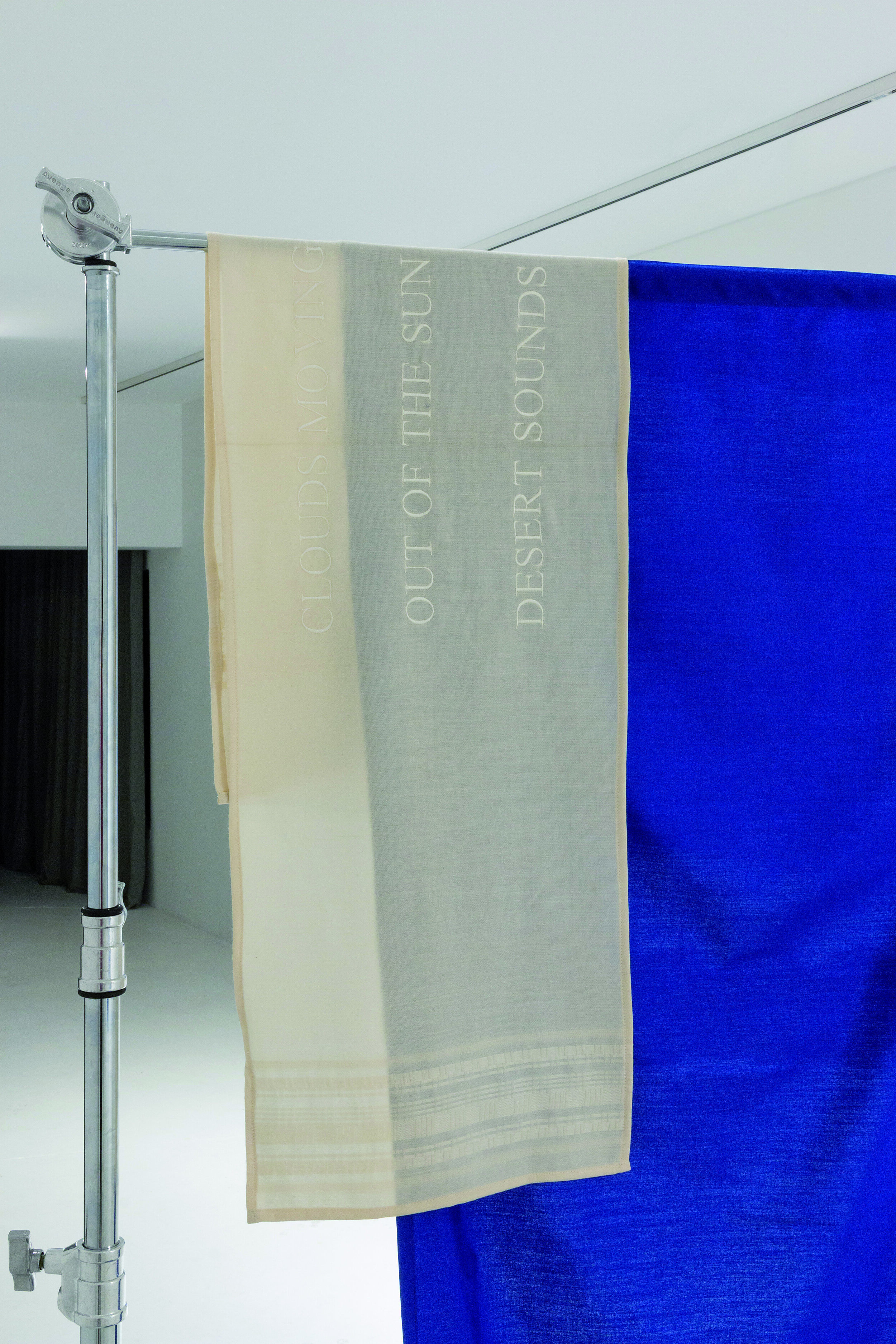

Daniel Laufer interweaves real and fictional image spaces to form a narrative mesh. In his spatial installation, he combines memory processes and the perception of the viewers to embark on a journey to places of remembrance.
In the first gallery room, he places two abstract oil paintings on a square blue screen. In front of the wall, a C-stand supports a Plexiglas panel depicting a cloud formation. A framed pencil drawing shows the negative of a woman’s portrait, a picture from the storyboard that the artist created for his film. An almost black canvas with vague contours hangs on the opposite wall, revealing the silhouette of a woman and stars, lights, a space?
The gallery space is a film studio and the pieces are parts of a set for the film Colour Memory (2016) presented in the second room of the show. In both the spatial installation and the film, Daniel Laufer combines different layers of time and context with each other. In the first room, he positions pieces making reference to film work, to the inner eye, and to experiences, thus becoming part of his creative process.
Laufer renders the immaterial visible in his works. The focus is on the phenomenon of the afterimage. This so-called phi-effect makes film sequences following a strong color stimulus appear in a complementary color. The effect is based on the fact that the retina continues to briefly perceive an image after the light stimulus and merges it with the following image. The sound sometimes refers to the previously perceived film still in some instances, letting the words speak at a different position. The brain requires a moment to connect what is heard with what is seen. Furthermore, the afterimage links different levels of time, the past with the present moment, which in the next instant is already the past again.
Color creates space; in the desert, an empty, abandoned place, it is the senses that guide humans. Georges Didi-Huberman describes the monochrome of the desert as a cultural site whose features demonstrate absence to man. The desert is a forlorn location in which bodies must constantly be on the move and search, an infinite quest? Man is the surveyor of this expanse, he determines the scale. The protagonists in the film move through empty spaces that are filled with memories and write history. Daniel Laufer visualizes these invisible transitions, states, emotions and interstices.
